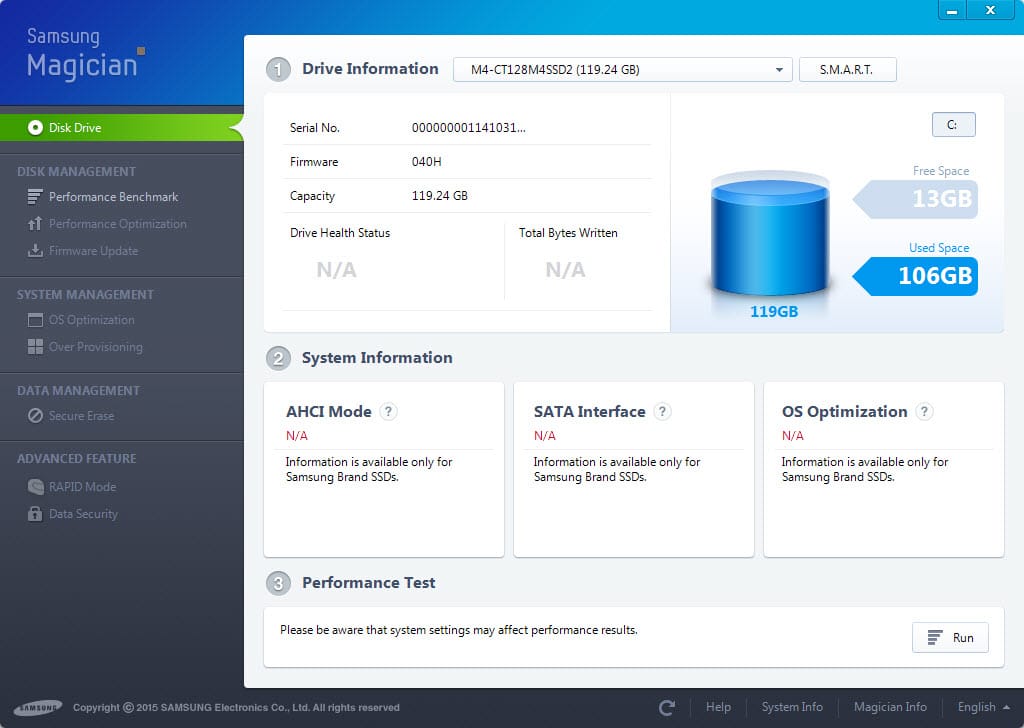

Unfortunately, you also come across anomalous results where manufacturers appear to be using different units for reporting. for ATA devices, including many external SSDs, it’s likely to be 241 and 243 Total LBAs Written, where an LBA is likely to be 512 bytes.So the number 100,000,000 represents up to 51.2 TB. for NVMe devices, including all recent Apple internal SSDs, this should be 007 Data Units Written, given as the number of 512-byte units in thousands, rounded up.

There are two different indicators that can be used for this: health indicators and an app such as DriveDx, SMARTReporter or smartmontools. Obtaining an accurate measurement of the total data written to an SSD appears simple, using S.M.A.R.T. I’ve seen it suggested that the ‘real’ TBW of modern Apple internal SSDs is anything from 600-1200 TB for a 1 TB drive. The average or median TBW could thus be significantly higher. You may thus find that a manufacturer sets their TBW so that they expect less than 5% of their drives to fail before reaching the TBW, to minimise the number of warranty claims they receive. In many cases, TBW are used to determine the length of warranty, for which they will err on the safe side. Like everything else, TBW isn’t a fixed value, and different SSDs of the same model will differ in their TBW, as will different manufacturing batches.

Not only that, but those widely used for third-party SSDs may not be reliable. There are only two problems here: obtaining a TBW value, and measuring the total amount of data written to the SSD.Īpple doesn’t provide TBW values for any of its internal SSDs. If my 1 TB SSD has so far written 100 TB to it, and has a TBW of 600 TB, then it has used 16.7% (one sixth) of its total life, and has 83.3% remaining. If you know the TBW for an SSD and the total amount of data that has been written to it during its lifetime, it’s simple to estimate the percentage of its lifetime (as TBW) that has been used up, hence the amount remaining. The larger the capacity of an SSD, the more data can be written to it during its working life. In other words, those SSDs should be good for about 600 program/erase cycles, which may not appear many until you translate that into life span in years. Typical values for good SSDs are around 150 TB for a capacity of 250 GB, 300 TB for 500 GB, 600 TB for 1 TB, and so on. This is because it effectively describes how many program/erase cycles that SSD should achieve before failing. Taken alone, this may not appear to make sense, but examined across a range of capacities, it becomes obvious that TBW increases with increasing capacity. Manufacturers may claim or even warranty that a given SSD has a TBW of 600 TB, for example. There are several different ways that the working life of an SSD can be expressed, of which the most widely used is TBW, the Total Bytes Written.
CHECK SSD HEALTH WRITE CYCLES FREE
Wear levelling is most efficient on SSDs with ample free space, using APFS. That helps wear-levelling, but can’t replace it. When writing changed blocks of data, unlike some older file systems, APFS doesn’t try to write the changed data to the same blocks, but uses copy-on-write to write new blocks each time.

This should be most noticeable on SSDs with relatively little free space, and high write rates. In order to ensure that all memory within an SSD has a similar level of wear, the mechanism also has to move around that more static data, which itself adds to the program/erase cycles, and increases wear. A lot of data stored doesn’t change from one month to the next. Wear-levelling doesn’t come without cost. We put a lot of trust into this internal wear-levelling. If those don’t function correctly, you could find some blocks of memory reaching the end of their working life while others have been barely used. To ensure that all the memory in an SSD ages at a consistent rate, they incorporate wear-levelling mechanisms. Once that limit has been reached, it ceases storing data. That occurs because there’s a limit to the number of times that each block of memory in the SSD can be erased and written to again in the program/erase cycle. Although like any solid-state electronics they can suddenly and unexpectedly die, for example if they sustain damage from spikes in power supply, the most likely cause of death of most SSDs should be when they can no longer be written to successfully any more. Solid-state drives (SSDs) should be more predictable. Predicting their working life is something of a black art, and most influenced by the wear and tear they sustain, particularly when they’re spun up, and even their specific manufacturing batch. Hard disks are electro-mechanical devices that wear out.


 0 kommentar(er)
0 kommentar(er)
